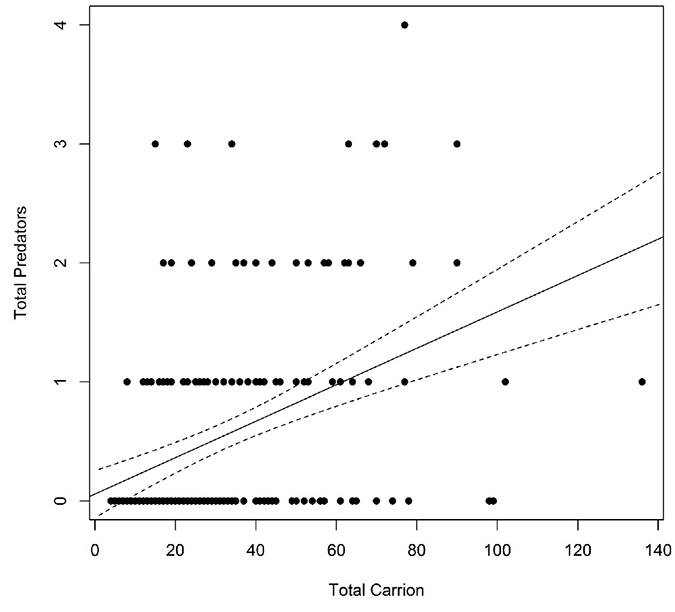
Ecological Archives E096-250-A4
E. F. LoPresti, I. S. Pearse, and G. K. Charles. 2015. The siren song of a sticky plant: Columbines provision mutualist arthropods by attracting and killing passerby insects. Ecology 96:2862–2869. http://dx.doi.org/10.1890/15-0342.1
Appendix D. Predator and carrion numbers in a natural population.
Methods
To determine whether predators tracked carrion abundance in unmanipulated populations of columbine, on 5 and 6 July 2014, we scored all accessible peduncles (n = 187) in the same meadow as the attraction experiment for number of carrion and number and identity of predators. We analyzed the relationship between these counts using linear regression.
Results
Predators correlated positively with carrion abundance; a linear regression explained ~16% of the variance in total predator abundance (r² = 0.1641, F = 36.32, df = 1, 185, p < 0.001); predicting that an increase of ~65 pieces of carrion would result in one additional predator observed on a plant.
Fig. D1. A positive relationship between natural carrion and predator abundance. Solid line represents the linear regression predator abundance = 0.06 + 0.015*number of carrion. Dotted lines are predicted 95% confidence intervals.